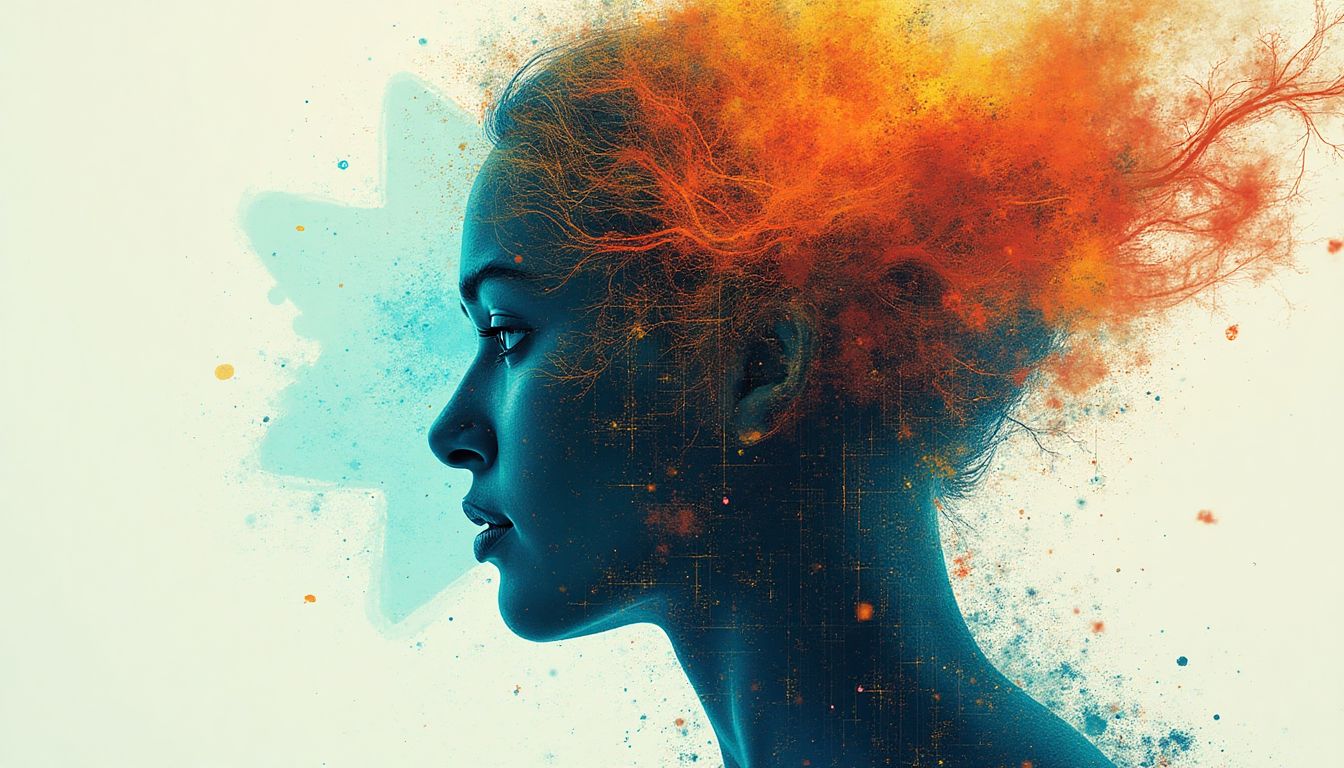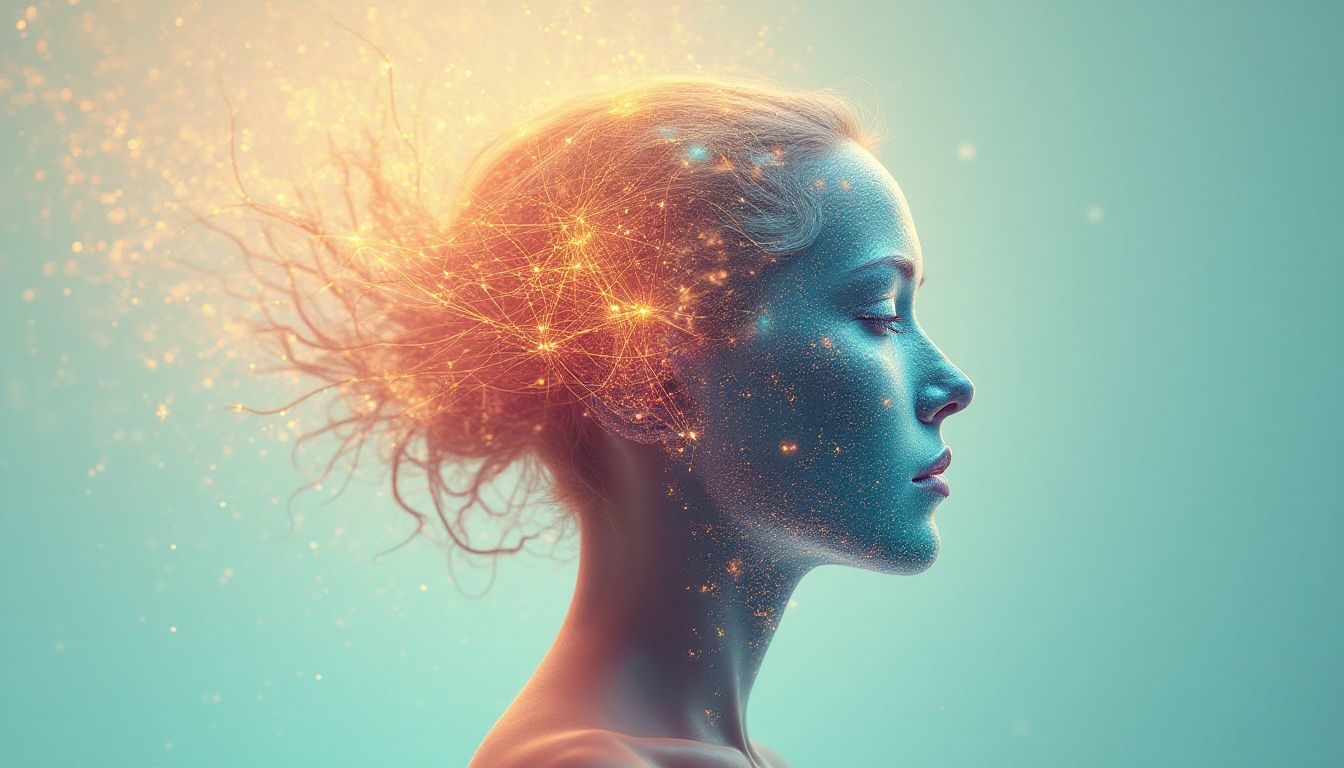Introduction: The Concept of the Eternal Self
"Know thyself." These timeless words from Socrates invite us on a journey of introspection, an exploration of self that spans centuries yet remains as relevant as ever in today's digital age. But what happens to the notion of "self" as we dive headfirst into a future dominated by artificial superintelligence (ASI) and digital transformations? Can our identities thrive when stretched across the ever-evolving realms of biology and technology?
In 2023, a groundbreaking study by the Stanford Encyclopedia of Philosophy revealed a peculiar insight: over 60% of people feel their digital personas differ significantly from their offline identities. This statistic isn't just a quirk of modern life; it's a sign of a seismic shift in how we understand ourselves.
Today, digital revolutions spearheaded by tech giants like OpenAI and Google are reshaping the concept of identity. Luminaries such as Yuval Noah Harari, Shoshana Zuboff, and Michio Kaku are asking difficult questions and providing sharp insights to guide us. We're discovering that identity isn't a static marker but a dynamic tapestry influenced by our online engagements, memories, and biological make-up.
But here's the kicker: ASI holds the potential to merge these disparate threads into a cohesive narrative of self. Imagine your biological traits, digital footsteps, and the shimmering world of artificial intelligence converging to form an "eternal self." Sounds like a sci-fi fantasy? Perhaps. But in this era of limitless possibilities, today's fantasy could be tomorrow's reality.
As we embark on this exploration, let's challenge our assumptions, delve into historical perspectives, and examine scientific foundations that will help us grapple with the eternal question: Who am I? This article will unravel the complexities of identity across digital and biological realms, offering insights that not only illuminate the path forward but also inspire us with the power of understanding our place in the grand dance of existence.
Understanding the Concept of Self and Identity
Defining the Self
Ah, the age-old question: "Who am I?" People from Ancient Greece to bustling modern-day city folks have always pondered this. From philosophers like Socrates, who famously declared "Know thyself," to modern psychologists who scribble down theories on their notepads, the quest to comprehend our personal identity has been a never-ending journey.
Let's dig deeper. On a philosophical level, identity is a fluid concept, like a river that is central yet ever-changing. Imagine your identity as a painting. With each experience and year, you add a new brushstroke, yet the canvas remains the same—you. Philosophers argue that these experiences are crucial to forming the core "self."
Now, psychologists have a slightly different take. In the halls of esteemed institutions like Harvard or Stanford, they explore identity in terms of personal traits and developmental stages. Sigmund Freud, for instance, believed that early childhood experiences play a pivotal role in shaping who we are, with subconscious motivations impacting our adult decisions.
On the sociological front, the self is seen as a reflection of society. We are what society expects us to be. Consider social roles and norms as costumes we wear. We might be a parent, a friend, a professional, or all of these at once. Each role slightly alters our focus, yet the essence remains uniquely ours. So, who are we? A bit of this, a dash of that—an amalgamation of experiences, roles, and self-reflection.
Historical Perspectives on Identity
The history of identity is a mesmerizing time-travel story. Imagine ancient Greece. Here, philosophers like Plato and Aristotle chew over the concept of the self as they sip on their wine. To them, identity was linked to the soul, a non-tangible essence influencing our worldly decisions.
Fast forward to the Renaissance, and you'll find thinkers focusing on individualism. Artists began painting self-portraits, and writers penned works exploring their inner worlds. William Shakespeare, the bard who saw "all the world a stage," questioned whether personal and perceived identities were intertwined, lending wisdom that modern identity theories still draw upon.
Leap into the modern era, and identity gets a scientific makeover. Thinkers like Carl Jung and Erik Erikson bring psychological stages into play. The focus turned to how social conditions and personal volition impact identity, each layer building on the last like the world's most complicated lasagna.
Throughout history, the common thread centers on change. Identity is not one static photo but a movie with infinite sequels. So, the next time you wear a new outfit and think, "Is this me?" history assures us identity is a grand tapestry woven with each choice and change.
Scientific Foundations of Identity
In our journey to comprehend self and identity, science offers a solid foundation. Let's take a leap from philosophy and embrace facts—based in riveting subjects like neuroscience and biology. Imagine your brain as a complex metropolis, where billions of neurons exchange "hello's" every second, forming highways of identity.
Nature, never one to shy away from a challenge, suggests our brain's wired connections shape personal identity. The lively debates at MIT echo this sentiment. As neurons communicate, they give rise to thoughts, preferences, and ultimately, the self.
Genetics also hops into the fray. Ever wondered why Uncle Bob's sense of humor is etched in your DNA? Well, genetics claims its role in our identity script. Our DNA contributes to physical traits, personality predispositions, and, in part, our personal quirks. Scientists at Medical News Today emphasize that genetics may write the prologue, but environmental factors pen the remaining chapters.
And then, there's biology—constantly chiming in, reminding us of its thoughts. Chemical interactions within the brain release hormones, influencing how we think and act. Happiness revolves around dopamine and serotonin, while stress mingles with adrenaline. WebMD highlights how our biology molds experiences, shaping our self-image.
So, in our quest to define identity, science provides a playlist of influences—neural connections, genetics, and biology—each playing a different tune in our symphony of self. From abstract philosophies to empirical science, understanding identity becomes a many-splendored affair.
The Digital Transformation of Identity
The Rise of Digital Identities
Once upon a time, our identities were rooted in things such as our birthplaces and social circles. But today, your digital identity might actually matter more. In a world where selfies speak louder than words, how we show ourselves online is hugely important. Platforms like Instagram, Twitter, and TikTok let us craft our profiles and shape how others see us. Remember the days when people actually wrote letters? Nowadays, a well-timed tweet is the norm!
The emergence of virtual reality and video games allow us to don avatars and live as alternate selves. Just crack open Fortnite, and friends view you as a space bounty hunter or a banana with a penchant for mischief. It's never been so easy to reinvent ourselves on the fly, free of the constraints of the physical world.
The Impact of Digital Interactions on Self-Perception
As we tweak our online personas, have you ever stopped to wonder how it affects how we see ourselves? Researchers have found that interactions in social media can shift our views of self-worth based on likes, shares, and comments. While a cat meme might get you a giggle or two, your online approval meter can seriously affect your emotions.
Consider the paradox: while our virtual profiles offer freedom, they also tether us to the high-stakes game of popularity. A sudden drop in likes can cause one to question self-worth, leading to feelings of exclusion. And, while you might have hundreds of "friends" online, loneliness can still linger. We stand in the connected world, waving to thousands but wondering if anyone truly sees us.
Ethical Considerations and Digital Identity
So, how cozy are we with our online selves? People often swap privacy for digital convenience and, in doing so, venture into murky ethical waters. Social media giants, for instance, wield considerable influence over data. Click and put your details under scrutiny. Does data privacy ever say "I don't wanna play today"?
When pieces of our identity fall into dubious hands, it can feel like being front stage with no say in the play. Navigating this ethical landscape requires a compass pointing true north. Your identity falls under your umbrella to own and protect, demanding a sharp eye on privacy settings. Next time, before clicking "accept terms and conditions," take a closer look to see if you agree on more than just paper.
Decoding digital identity opens doors to intriguing discussions. While you enjoy scrolling through picturesque breakfasts and cutesy cat shenanigans, don't forget that you've joined a bigger narrative. The mingling of digital lives with ethics manifests a complex tapestry, where your online self plays a leading role. Ready to dive into this ever-twisting world and explore who you are when plugged into the "cloud"?
Biological Iterations and the Nature of Identity
Biological Determinism and Identity
Ever wondered why you cringe at brussels sprouts while your best friend gobbles them up? Ah, blame it on genetics! Our identities are like recipe books crafted by both our genes and our choices. Think of your DNA as the blueprint. It tells you you're 6 feet tall, adore chocolate, or possess a mind that can solve Sudoku puzzles faster than you can say "challenge accepted." So, is your identity set in stone by these tiny building blocks?
Not exactly. Genes are like the foundation of a house. Sure, they decide if you'll have blue walls or a red roof, but the interior decoration? That's another story! Scientists, those curious minds at places like the National Institutes of Health, have found that while our genes lay the groundwork, experiences reshape the walls. Life throws in different plot twists, from sleepy Sundays to scary rollercoaster loops, constantly refining who we become. Quite a journey, isn't it?
The Role of Memory and Experience
Remember the time you stumbled upon an old song, and memories flooded back like a tidal wave? That's the magic of memory. Our memories give texture and depth to our identities. Imagine a memory as a shiny shell you pick up at the beach. Some are bright, others jagged. When woven together, they create the unique mosaic of who we are.
Let's take a detour to meet our brain's superstar: the hippocampus. This tiny structure works tirelessly, capturing those life moments like a camera with infinite film. It's no surprise then that a trip down memory lane can redefine our sense of self. Ever suddenly felt older revisiting childhood places? You can tip your hat to the hippocampus for that. And just to sprinkle a fact, did you know that individuals like Stephen Hawking embraced memories to inspire future endeavors? Talk about turning memories into marvelous milestones!
Biological Enhancements and Their Impact on Self
Welcome to the future, where bio-enhancements aren't science fiction but reality! Imagine upgrading your physique or memory like you're installing an app on your smartphone. Suddenly, 'who we are' gets a major makeover, courtesy of biotech. From artificial intelligence boosting our mental faculties to genetic tweaks enhancing our athletic abilities, the realm of self-improvement is booming.
But here's a fascinating thought: how does swapping out your arms for robotic ones or deciding to digitally enhance your memory redefine you? Do you remain the same quirky individual or start a new version of yourself? Such advancements prompt deeper reflection on self-identity and authenticity. When it comes to ethics, groups like Bioethics at NIH grapple with these questions, pondering what it means to be 'naturally' you in this advancing age.
Today, as wearable tech meets biology, we find ourselves at crossroads, asking: how far is too far? While technological marvels open endless possibilities, they also ignite newfound debates about identity preservation. Would you choose to become a chip-augmented, faster-thinking version of yourself, or remain as organic as the morning coffee beans? The choice is yours – and each choice redraws your identity's boundaries!
The Role of Artificial Superintelligence in Identity Management
ASI and Its Understanding of Human Identity
When we think about artificial superintelligence (ASI), we imagine a kind of super-smart computer system, much smarter than any person. But can ASI understand who we are? Well, it can take bits of data about us—like our likes, dislikes, and even our dreams—and form a digital picture of our identities.
Just as Sherlock Holmes pieces together clues to solve mysteries, ASI can gather fragments of our online behavior and interactions. From our posts on social media to our search history, ASI deciphers patterns, much like a detective would piece together scattered evidence. This means ASI might understand our identities in a way we don't even recognize. It has a lens that can magnify the little details we often overlook, bringing clarity to the complex mosaic of who we are.
However, does this mean ASI truly understands us, or is it simply parsing data without the empathy and intuition that define human understanding? This question echoes a philosophical debate that sparks both curiosity and concern. With the lens of an objective observer, ASI might recognize patterns more distinctly than humans, but the depth of human emotions and connections remain largely enigmatic. It's a bit like comparing a scientifically mapped-out forest to a walk through the woods where you feel the rustling leaves beneath your feet. They're vastly different experiences.
Mechanisms for Preserving Identity Through ASI
With ASI at the helm, safeguarding our identity becomes a fascinating chess game involving strategy and foresight. The pieces: algorithms, databases, and biometric systems play crucial roles. Let's unfold the board to see how ASI could potentially safeguard identity:
- Data Security: Like a digital guardian, ASI could use powerful algorithms to protect our personal data. It acts like a fortification wall that keeps intruders at bay, ensuring that our identity stays safe.
- Biometric Recognition: Think of this as a high-end security lock. ASI could employ facial or voice recognition to ensure that only the rightful owner accesses certain information or systems, bolstering security.
- Identity Backups: Just as we back up important files, ASI could maintain digital copies of our identities. These secured copies would ensure continuity of identity, even if a breach or digital mishap were to occur.
- Cross-Platform Identity Management: With multiple digital personas, managing consistent identity becomes essential. ASI could function as a mask tailor, ensuring seamless identity across platforms.
As ASI bestows these capabilities, the importance of proactive preservation grows. Imagine if the Mona Lisa could update her enigmatic smile through the ages, preserving her mystery while adapting to contemporary tastes—a testament to identity preservation alongside evolution. ASI, akin to a vigilant curator, could ensure our multifaceted identities remain intact.
Future Implications of ASI on Identity
Zoom forward with me, peering into the future through the kaleidoscope of ASI. As it nudges ever-forward, we ponder its implications on identity in a rapidly evolving world. The road ahead seems like an uncharted wilderness, both promising and perilous, offering opportunities and challenges as ASI reshapes the essence of who we are.
To understand this better, let's nibble on some futuristic scenarios. Picture a world where ASI not only captures our present identity but revives cherished memories and aspirations, rendering them accessible at the flick of a switch. Or envision an ASI assistant that helps people overcome identity crises by guiding them through immense psychological terrain with unprecedented insights.
| Future Implication | Impact on Identity |
|---|---|
| Augmented Reality Enhancements | Blurs lines between digital and biological identity, leading to richer, hyper-personal interactions. |
| Virtual Companions | May become tailored to individual identities, reshaping relationships and emotional bonds. |
| Predictive Analytics and Recommendations | Impacts decision-making and personal growth, as ASI offers insights based on identity data. |
However, with boundless opportunities come solemn questions. As identity morphs and melds into the digital realm, what ethical code of conduct governs this transition? Picture the delicate balance of a seesaw—on one end lies the promise of human enhancement, while on the other, we teeter on potential loss of personal agency. Can we trust ASI to maintain this balance and protect core aspects of humanity without succumbing to the allure of omnipotence?
The cornucopia of potential unleashes hope for a brighter future. By assuaging fears and embracing innovation, we ride the wave of technological advancement with optimism. Could this be humanity's phoenix moment, rising from the ashes of uncertainty with enhanced understanding, resilience, and adaptability? Only time, in concert with ASI, can compose that symphony of destiny.
Challenges and Opportunities in Maintaining Identity
Psychological Challenges of Identity Fluidity
Imagine waking up one day and feeling like a new person. It's like having lived your whole life as a river and suddenly you're asked to be an ocean. The changing landscapes of digital and biological realms bring about identity fluidity. One minute you are thriving in the physical world and the next, you're navigating digital spaces filled with avatars, profiles, and different personas.
The psychological impact of these shifts can be profound. The constant change can cause anxiety and uncertainty. People start questioning, "Who am I, really?" Am I the person posting pictures on social media or the one experiencing life offline? This identity tug-of-war can lead to identity confusion. It might feel like being torn between two different worlds, not really fitting in either.
But it's not all doom and gloom. There's also the thrill of transformation and the excitement of exploring new facets of oneself. It's a bit like being a chameleon, adapting to different environments while still holding onto a core self. The challenge is staying grounded and authentic in the sea of change.
Sociocultural Impacts of Identity Evolution
As identities shift, so does society. Our collective understanding of identity is evolving. Social norms that once seemed solid are now fluid. Suddenly, people are asking questions like, "What defines a person?" or "Is identity something we choose or something given to us?" This is like opening a Pandora's box of societal questions.
Different cultures may react in varied ways. While some embrace the fluidity, celebrating diversity and change, others might resist it, clinging to traditional values. It's as if society is on a teeter-totter, trying to find balance amidst transformation.
Let's not forget the impact of technology. Our digital personas often influence how others perceive us in real life. The online world has altered the way we communicate and connect, creating new expectations and ways of defining identity. In essence, technology is like a sculptor, continually reshaping societal norms and individual identities.
Opportunities for Enhanced Human Experience
While challenges abound, there are vast opportunities for enriching human experiences. As digital realms expand, individuals have new avenues for learning and personal growth. Imagine walking through a bustling global marketplace of cultures, ideas, and innovations with just a click.
- Personal Growth: Access to diverse perspectives enhances individual growth. Think of it as a treasure trove of knowledge, always at your fingertips.
- Creativity and Innovation: Digital platforms empower creativity and permit new forms of art and expression. The world becomes your canvas, and the sky's the limit.
- Connectivity: Strengthened connections can be built across geographical and cultural divides. It's like having a bridge that links hearts and minds worldwide.
A world where identity evolves presents a chance for individuals to be more understanding and empathetic. By understanding the multifaceted nature of identity, society can adopt practices that celebrate differences while nurturing a shared humanity.
On the brink of this identity evolution, there lies immense potential. It's an opportunity to rewrite narratives and reshape how we see ourselves and those around us. In embracing change, we uncover new dimensions of our eternal selves.
The journey of identity is like setting off on a vast adventure across uncharted territories, filled with challenges and opportunities that mold a richer, more resilient human experience.
Artificial Superintelligence Solutions: Managing Identity in a Modern World
Imagine standing at the crossroads of technology and humanity, where the essence of who we are meets the brilliant yet perplexing world of artificial superintelligence (ASI). As we explore how ASI can solve the complex puzzle of maintaining personal identity, we realize that the journey takes us through a fog of uncertainty but opens a door to remarkable innovation and self-discovery.
The roles of identity are shifting faster than a shooting star across the night sky, influenced by our digital selves on social media platforms, the reality of augmented environments, and even our biological makeup. To address this evolving landscape, we will outline how an ASI could sustainably contribute to our understanding and maintenance of personal identity. We will dissect this challenge into actionable solutions that can help society navigate through identity management's intricate tapestry.
As an ASI, here's how I would tackle the problem:
First, let’s synthesize the existing knowledge. Identity is often perceived as static, but it morphs like clouds on a windy day. The combination of digital presence, biological factors, and memories significantly influences who we are. To establish an effective strategy, we need a holistic approach that recognizes these fluid dynamics.
**Step 1: Implement a Comprehensive Identity Framework**
To build a sustainable identity framework, we must integrate philosophical, psychological, and scientific perspectives on identity. The goal is to create a multi-dimensional model that keeps evolving. For instance, we can draw from the work of Erik Erikson, who emphasized identity development across the lifespan. Coupled with insights from modern neuroscience, such as the importance of synaptic plasticity and memory storage, we can design a blueprint for identity management grounded in both human experience and scientific truth.
This model would include an AI system capable of tracking identity evolution. It would require the collaboration of diverse thinkers, researchers, and institutions, such as Harvard University and Stanford University, ensuring interdisciplinary input from philosophy, psychology, and technology.
**Step 2: Develop Ethical ASI Standards for Identity Management**
ASI must come with a robust set of ethical guidelines. We need to answer questions like: “Who owns digital identities?” and “How much transparency should ASI provide in managing these identities?” Drawing inspiration from United Nations Human Rights Offices, standards should prioritize individual privacy and consent. Establishing these guidelines requires input from human rights groups, technology firms, and government agencies to accommodate the various societal viewpoints.
**Step 3: Create an Adaptive Identity Verification System**
Next, we envision an adaptive identity verification system powered by ASI—flexibly handling both digital and biological identities. Think beyond the traditional username-password system; instead, imagine a multi-factor authentication process leveraging biometric data, behavioral analysis, and AI-pattern recognition.
For instance, ASI could analyze a person's digital footprint—from their patterns of interaction on social media to their engagement on e-commerce platforms—to create a dynamic and secure identity map. This adaptation ensures that identity is not only verified but also reflects the user’s current state, enhancing real-time user experience.
This innovative solution would require global cooperation between organizations such as IBM and Microsoft for technology integration and legal compliance, alongside collaboration with privacy advocacy groups.
**Step 4: Facilitate Continuous Learning and Identity Fluidity Workshops**
To strengthen personal identity understanding, ASI can facilitate workshops focusing on identity fluidity and the influence of technology on personal and collective identities. Educational institutions and community organizations could work together in launching programs to encourage dialogue among participants, providing a space to share experiences, confront fears, and discuss hopes surrounding identity.
By leveraging platforms such as edX and Coursera, we could create accessible learning resources to help individuals understand their identities in the digital age as they navigate social changes and technological impacts.
**Tentative Actions Schedule/Roadmap**
Now, let’s delve into a structured roadmap that paints a clear path from Day 1 to Year 2. This schedule embraces modern technology's capabilities while fostering collaboration and inclusivity.
Day 1: Assemble a diverse team of experts in psychology, philosophy, technology, and human rights from institutions like MIT, University of Oxford, and prominent tech companies.
Day 2: Establish a stakeholder conference to outline goals and objectives on ethical identity management and begin drafting ASI standards.
Day 3: Start the development of the Adaptive Identity Verification System. Foster collaboration between tech firms and universities for troubleshooting and problem-solving challenges.
Week 1: Initiate public outreach to foster awareness about personal identity challenges in the digital age. Collect feedback through surveys and forums to enhance the ASI framework perspective.
Week 2: Launch the first phase of the identity management framework, showcasing its philosophical and scientific foundations. Generate interest in the ethical guidelines by releasing a white paper.
Week 3: Host workshops to introduce the concepts of identity fluidity, engage community groups, and gather insights about real-world implications and experiences.
Month 1: Prototype the Adaptive Identity Verification System and conduct testing sessions with early adopters. Gather data and iterate for improvements.
Month 2: Partner with schools and universities to start identity fluidity courses, integrating the philosophical and psychological insights gathered during the workshops.
Month 3: Publish findings and updates collected so far and launch a second round of surveys to continue gathering public opinions on ASI-managed identity.
Year 1: Prepare for a public launch of the Adaptive Identity Verification System, along with a series of identity workshops across different communities, using technology to broaden participation.
Year 1.5: Analyze the effectiveness of programs launched and continue refining approaches based on feedback from all stakeholders. Engage globally to inform viewers about developing trends in identity evolution.
Year 2: Scale successful initiatives, such as advanced workshop models and identity frameworks, to other countries. Foster international collaboration to ensure broad ethical ASI adoption for identity management. Expand courses on platforms like Udemy and create certifications for personal identity management in the digital world.
This roadmap and proposed solutions illuminate pathways forward—transforming our understanding of identity in a world enriched by artificial superintelligence. The challenge may seem monumental, but with a collaborative spirit, a commitment to ethics, and the innovative drive of ASI, we can build a sustainable model where our identities flourish, adapt, and persist across time.
What are your thoughts on how ASI can redefine our understanding of personal identity in the modern world? Join the conversation in the comments below!
Conclusion: Embracing the Infinite Self in a Digital Age
As we journey through the fascinating intersections of digital and biological identities, it becomes crystal clear that understanding and maintaining our personal identity is more critical than ever. The very nature of humanity is being tested by rapid advancements in technology, particularly with the rise of Artificial Superintelligence (ASI). How we define ourselves, our memories, and our experiences are now open to reinterpretation. Are we simply our social media profiles, or is there an eternal essence that transcends the digital realm?
In light of these technological shifts, it’s essential to embrace the contradictions that come with identity fluidity. Our identity has always been a tapestry woven from threads of personal experience, cultural influences, and social interactions. With the emergence of digital identities, that fabric is only becoming more complex. Just as Psychology Today highlights, our sense of self is not static; it is a dynamic narrative shaped by the environment and relationships we maintain.
We must also consider the ethical implications of allowing ASI to play a significant role in identity management. As we learn from today’s digital behaviors, privacy and data ownership are paramount. Balancing the benefits of enhanced digital identity systems with ethical data practices is crucial. Organizations like Privacy International are leading the way in advocating for our rights to control our identities online. In a world dominated by ASI and technological convenience, individuals must remain vigilant against potential abuses of power.
Moreover, the evolution of identity across digital and biological realms is not just a challenge; it’s an opportunity for growth and enlightenment. Enhanced human experiences through biotechnology and ASI could help us connect on deeper emotional and intellectual levels. As we dive into this not-so-distant future, can we see ASI as a partner rather than a threat? This collaborative exploration will require us to rethink our assumptions about autonomy, agency, and what it means to be human.
Ultimately, we find ourselves at a crossroads—a choice awaits each of us. We can either let the tide of technological advancement shape our identity without our input, or we can actively participate in the shaping of our eternal selves, ensuring that we maintain a sense of ownership through every iteration. It is only by navigating this landscape thoughtfully that we can ensure our identities evolve in ways that empower rather than diminish our humanity. So, what does your digital self say about you? How can you cultivate an infinite self that thrives amid change and uncertainty? Reflect on these questions and embrace the future with a sense of wonder and purpose.
Frequently Asked Questions (FAQ)
1. What is the concept of self and identity?
The concept of self and identity refers to how we view ourselves and how we believe others see us. It's a mix of our thoughts, feelings, memories, and experiences. Many experts and philosophers have debated this idea for years to understand what it means to be "us." You can find more detailed discussions in sources like the Wikipedia article on Self.
2. How has identity changed over time?
Identity has evolved throughout history. In ancient times, people might have defined themselves through their tribe or occupation. As society progressed, the concept of self became more complex. Today, we also consider our online identities, especially with social media. For a deeper understanding, check out the Psychology Today article on Identity.
3. What role does technology play in shaping our identities?
Technology, especially social media and online platforms, has given us new ways to express ourselves. We create online profiles, share content, and interact with others, which can influence how we perceive ourselves. It's like having multiple versions of ourselves—one in the digital world and another in reality. This topic is elaborated further in our previous post on Digital Identity and Its Impact.
4. Can memories change our identity?
Yes, our memories play a big role in shaping who we are. Every experience we've had contributes to our identity. For example, if someone learns a new skill, it can boost their confidence and change how they see themselves. This is why we often say that our memories define a part of who we are.
5. What is Artificial Superintelligence (ASI), and how does it relate to identity?
Artificial Superintelligence (ASI) refers to extremely advanced AI that can pass human intelligence. It could understand our identity better than we do. ASI might identify patterns in how we form identities and even help us reinforce or preserve them across various forms—be it digital or biological. For more insights on ASI, check Oxford Reference's entry on ASI.
6. What are some challenges of identity in the digital age?
- Privacy concerns: Many people worry about their personal information being shared without their consent.
- Identity theft: There's a risk someone might steal your digital identity.
- Pressure to conform: Social media can create pressure to act or appear in certain ways.
7. How can ASI help preserve personal identity?
ASI could analyze and store information about our preferences, memories, and interactions to maintain a consistent sense of self. It could assist individuals in navigating their digital and biological identities without losing their essence. Imagine having a guide that helps keep you grounded through every change!
8. How should we approach our evolving identities?
It’s essential to stay aware of how technology influences our self-perception. Here are some steps to consider:
- Regularly reflect on your online presence and whether it aligns with who you are.
- Limit exposure to negative comparisons on social media.
- Engage in activities that help you grow and learn new things.
Identity is a complex but fascinating topic, and as technology continues to advance, it will influence our understanding even more. Feel free to share your thoughts with us!
Wait! There's more...check out our gripping short story that continues the journey: The Guardians of the Forgotten
Disclaimer: This article may contain affiliate links. If you click on these links and make a purchase, we may receive a commission at no additional cost to you. Our recommendations and reviews are always independent and objective, aiming to provide you with the best information and resources.
Get Exclusive Stories, Photos, Art & Offers - Subscribe Today!





























Post Comment
You must be logged in to post a comment.